Picture That (Part II)
…let's continue the gallery!
This is Pristina as seen from atop the bell tower of the cathedral downtown.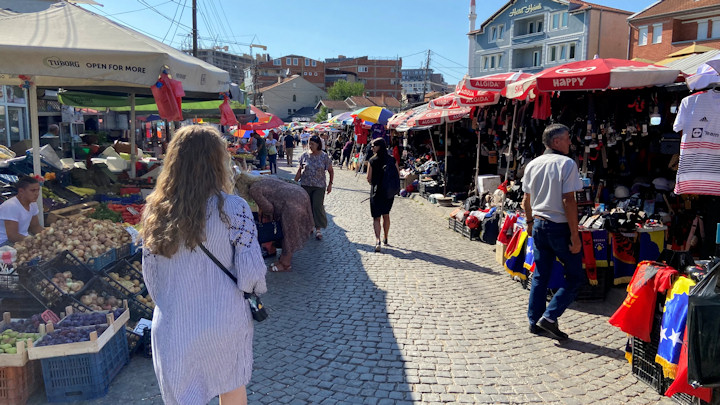
Here is one alley of Pristina’s colorful bazaar, which you may remember me talking about in Week Three.
 This mosque dates back to the 1398, when its foundation was laid in celebration of the Ottoman victory over the Serbs in the Battle of Kosovo. Known as the Çarshi Mosque, or Bazaar Mosque, it is the oldest building in Pristina and marks the edge of the old quarter. It has seen numerous renovations, but the stone minaret has stood for centuries.
This mosque dates back to the 1398, when its foundation was laid in celebration of the Ottoman victory over the Serbs in the Battle of Kosovo. Known as the Çarshi Mosque, or Bazaar Mosque, it is the oldest building in Pristina and marks the edge of the old quarter. It has seen numerous renovations, but the stone minaret has stood for centuries.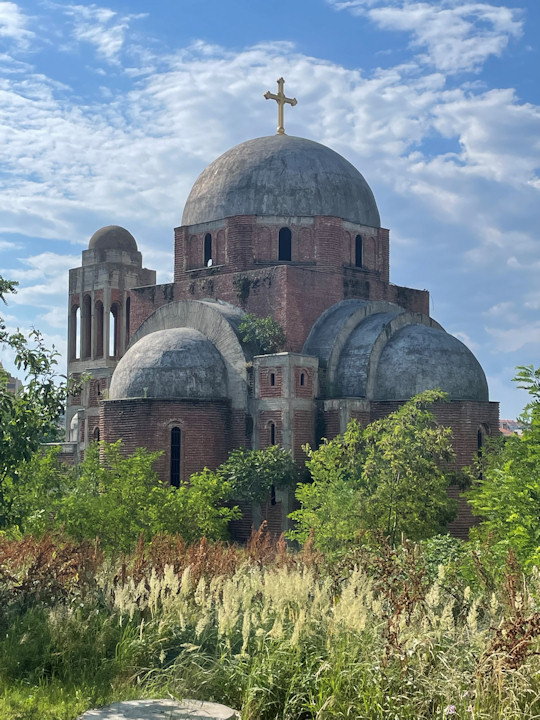
The Church of Christ the Savior, which I mentioned briefly in Week Three, is a Serbian Orthodox church that was never finished after the war. Seen by Kosovar Albanians as a relic of the oppressive rule of Yugoslavia’s Slobodan Miloševic, it is a bit of a sore spot in Pristina’s skyline.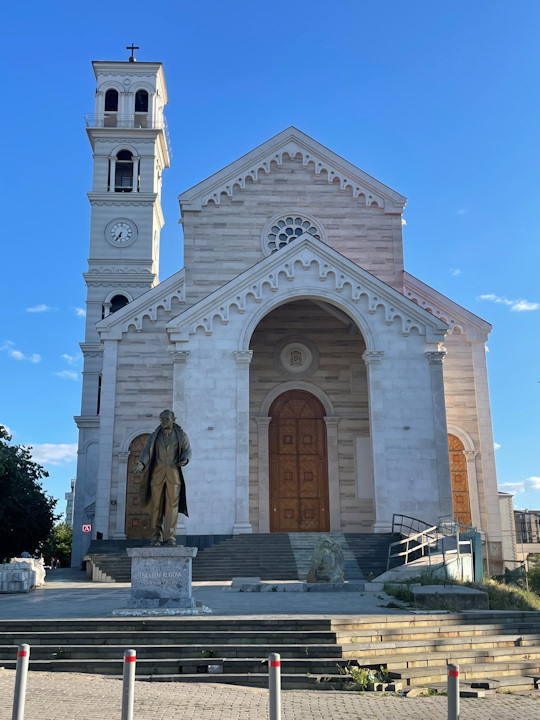
Here is the Cathedral of Saint Mother Teresa, whose bells I mentioned ringing throughout the city in Week Four. Mother Teresa was born in North Macedonia but she was ethnically Albanian, so she is an important figure to Kosovars as well. The foundation stone of this Roman Catholic cathedral was laid in 2005 by former President Rugova, who was Muslim.
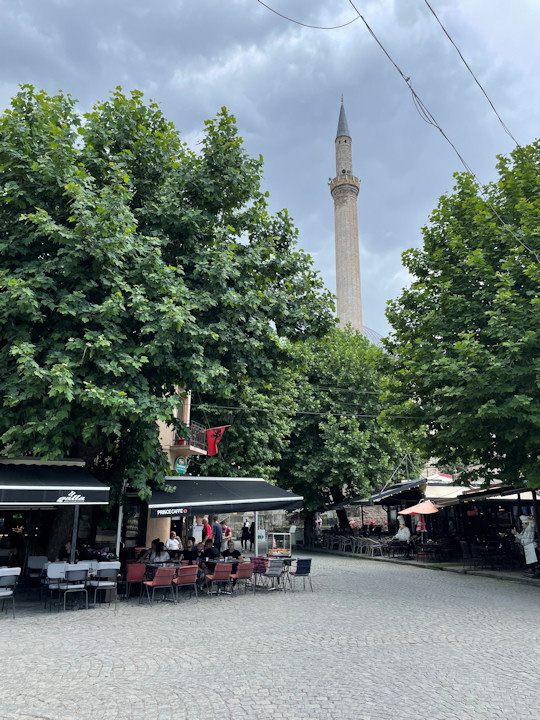 This is the old quarter of Prizren, the first city I visited outside of Pristina as my first stop in CLARD’s campaign against domestic violence in Week Two.
This is the old quarter of Prizren, the first city I visited outside of Pristina as my first stop in CLARD’s campaign against domestic violence in Week Two.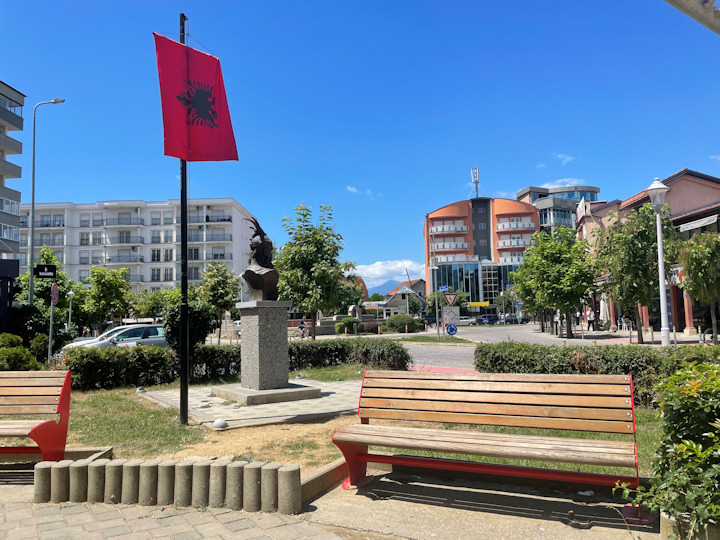
This is the town square in Klinë, another campaign stop, which I will talk more about next week. On the left you can see an Albanian flag and the bust of Skënderbeu, a sort of national hero to Albanians for his valor in fighting the Ottomans.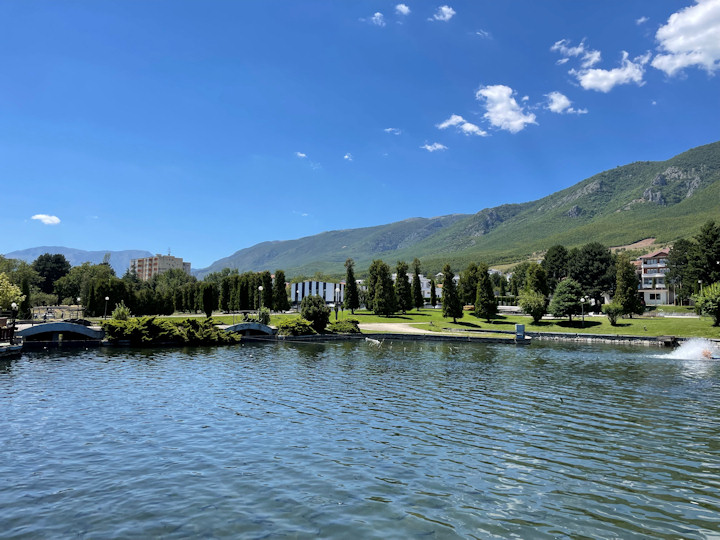
Framed on all sides by mountain ranges, Kosovo’s idyllic countryside is all rolling hills and valleys.
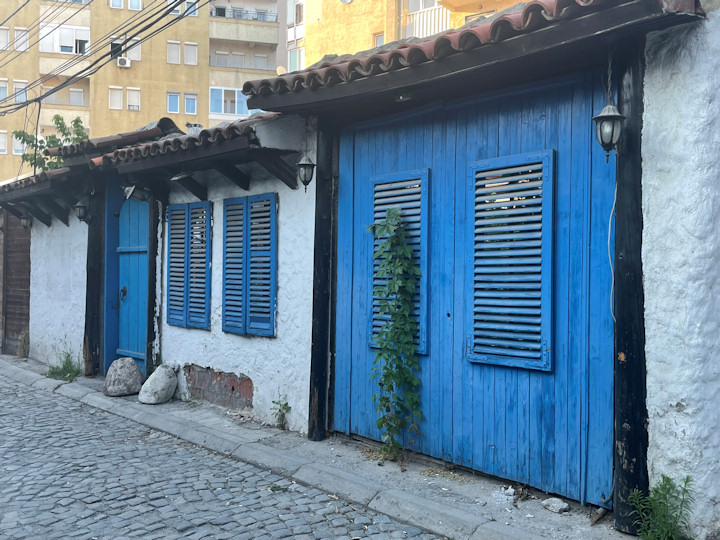 And this is the old quarter back in Pristina, a quiet time capsule tucked away in a bustling city.
And this is the old quarter back in Pristina, a quiet time capsule tucked away in a bustling city.
That is all for now, friends, but I will be back next week with more history, culture, and experiences from CLARD's final week of the campaign against domestic violence!
Ciao!